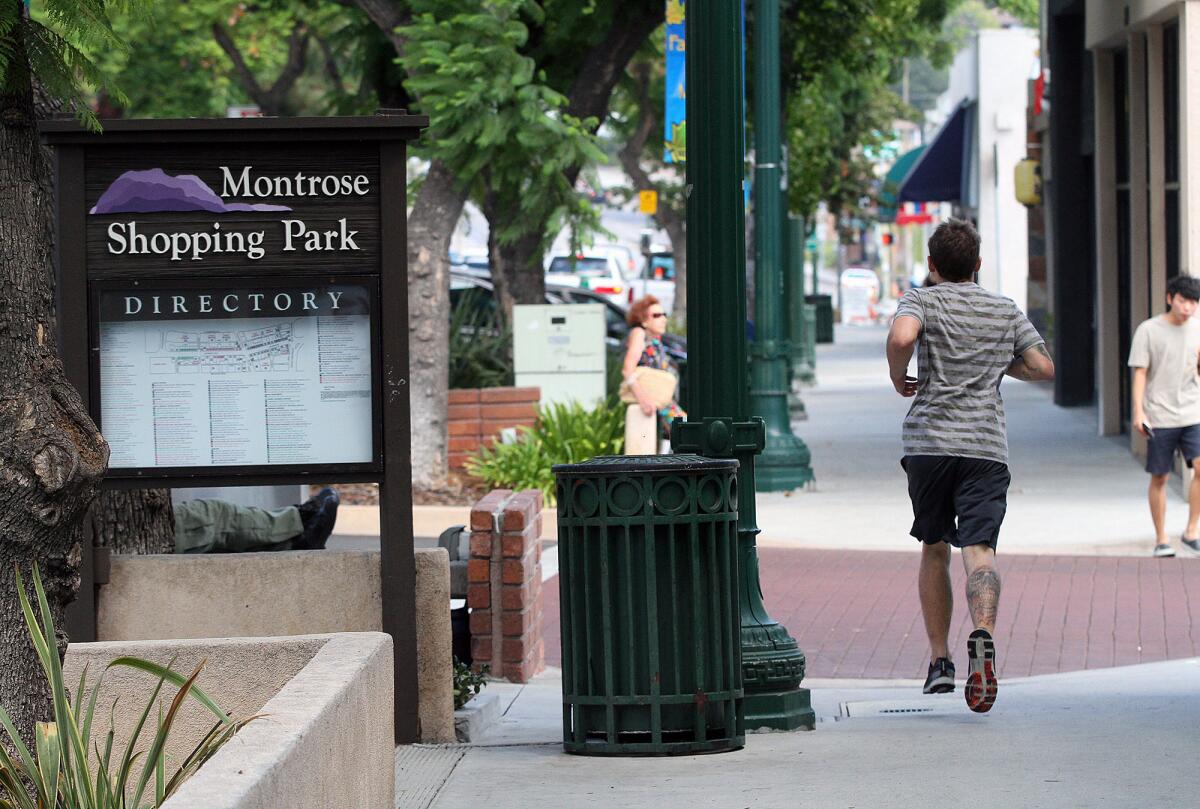Intersections: Can La Crescenta maintain its originality?

The Montrose Shopping Park in La Crescenta-Montrose in Aug. 2014.
Los Angeles has always been a place for me that is quite different from what the rest of the world knows, or thinks they know about the city — and La Crescenta has always been part of that reality. It’s very far away, both literally and figuratively, from parts of the city that house exclusive eateries or expensive shops that try to sell you T-shirts for hundreds of dollars.
It’s not shiny or trendy, but it’s real. It’s not trying to be something it isn’t, it has quirky shops, a lot of interesting characters, often forgotten historical sites and a slower place of life that isn’t for everyone.
NEWSLETTER: Get the latest headlines from the 818 straight to your inbox >>
What I love about La Crescenta is that it isn’t like everywhere else, that is has preserved, by way of community or something else, the things that many other cities have lost — their originality.
At some point during my travels, cities, major ones anyway, started looking the same to me, so I often made it a point to go elsewhere, to go to the places that people didn’t really think to venture out to.
MORE: Read more of Liana’s columns >>
I also started doing the same in California. My weekend drives took me to small cities on the way to larger ones. Getting away to the places that still seemed to be interesting without even trying was a source of relief for me.
I’ve been thinking about these experiences lately. In Detroit, where I am currently, many areas in the city are being redeveloped; it’s the kind of news you can’t escape. After suffering for so long, the city needs it, but for the last month that I’ve been here, I’ve been wondering what redevelopment means and who it’s benefiting and how it fits into the larger context and history of this city and its people.
In Yerevan, a city I’ve spent a lot of time in, historic buildings that are a gateway into the past of a place that’s said to be 29 years older than Rome are being torn down constantly to make way for new developments — “elite” hotels and apartments that practically no one can afford. Any physical sign that Yerevan existed before the last 50 years is being wiped away, brick by brick.
Developments are also taking place in La Crescenta, with recent plans involving the site of a former bar the Mix that may be turned into condos. I regret not ever going to the Mix before it closed. I was feeling nostalgic, so I looked up its Yelp page, even though it’s been closed for years, just to get a sense of what I missed.
“If you don’t care about pretty — this is the place to have wild, crazy relaxed fun,” one Yelper wrote. “It’s got all the makings of the proper dive.”
I was already pretty sad I had missed my chance to go when I scrolled down and saw another review that made me even sadder:
“There’s plenty of wood paneling, pool tables, dart boards and a separate bar in the back where cover bands play to crowds of 20 people or so,” according to the review. “And can’t forget about the dance floor back there featuring a stripper pole.”
I know this wasn’t the place for everyone, and I’m not saying we shouldn’t be building places for people to live, but it just feels like locally, and globally, we’re in danger of losing all the things about our cities that make them special, that the one-of-a-kind places for us to meet fascinating people and hear their stories are diminishing, and sooner or later, we’re just all going to end up living in places that look and feel the same as everywhere else.
Maybe it’s just me, but I’m not looking for things to be sleek, shiny and new. What I’m really looking for is authenticity, and I hope La Crescenta is, too.
--
LIANA AGHAJANIAN is a Los Angeles-based journalist whose work has appeared in L.A. Weekly, Paste magazine, New America Media, Eurasianet and The Atlantic. She may be reached at [email protected].